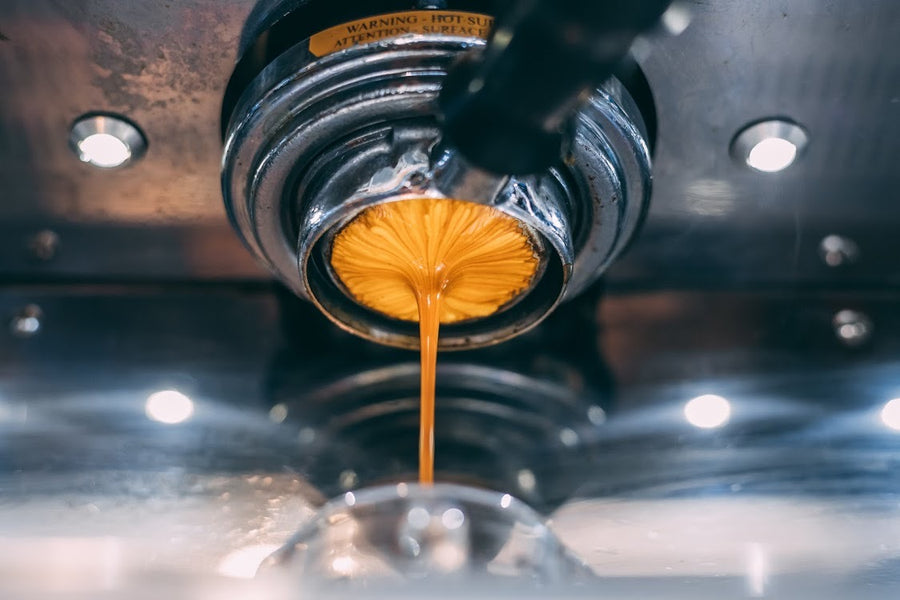Why Coffee Enthusiasts Prefer SOE Single Origin Espresso for Clarity
Wiki Article
Recognizing Coffee Beans: the Trip From Coffee to Blended Coffee Beans

The Origins of Coffee: A Global Point Of View
While you might consider coffee as a modern-day staple, its origins map back centuries, intertwining with societies around the world. The story starts in Ethiopia, where tale says a goat herdsman named Kaldi uncovered the stimulating effects of coffee beans after observing his goats romping energetically after eating them. This triggered passion, bring about coffee's spread to Arab investors who treasured the brewed drink. By the 15th century, it reached Persia, Egypt, and Turkey, where coffeehouses ended up being social hubs for conversation and society.As trade paths increased, coffee made its way to Europe in the 17th century, swiftly obtaining appeal. It changed from a magical drink into a daily ritual, inspiring celebrations and intellectual exchanges. Each culture added its special spin to coffee prep work, enriching its history. This global journey highlights exactly how coffee links us, going beyond boundaries and joining varied traditions through a basic bean.
Growing and Harvesting of Espresso Beans
As coffee's trip developed, the emphasis moved to the growing and harvesting of particular bean ranges, specifically those used for espresso. You'll locate that coffee beans often come from Arabica or Robusta plants, each offering distinct tastes. The suitable expanding conditions include high elevations and rich, well-drained soil, which boost the beans' high quality.Throughout the harvest, picking approaches vary. Timing is vital; you desire to gather when the cherries reach peak perfection for optimum flavor.
As soon as gathered, the beans are planned for processing, which is essential in determining their final taste. Comprehending the growing and collecting procedures gives you insight into what goes into your preferred coffee, enhancing your recognition for each mug.
Processing Approaches: From Cherry to Bean
Since you have actually learnt more about harvesting espresso beans, allow's check out how those cherries change into the coffee beans you like. You'll see how different harvesting strategies influence taste, followed by the vital actions of fermentation and drying. Ultimately, we'll break down the milling and grading process that determines your coffee's high quality.Gathering Strategies Explained
When it comes to coffee, recognizing harvesting techniques is important, considering that they straight affect the flavor and high quality of the beans you take pleasure in. Careful choosing includes hand-picking only ripe cherries, ensuring you get the best quality beans. Inevitably, the selection of collecting strategy can substantially affect your coffee experience, so it's worth understanding how those beans made it to your mug.Fermentation and Drying Out
After gathering, the next steps in handling coffee beans play a substantial duty fit their flavor. You'll locate that fermentation is essential, as it assists break down the mucilage surrounding the beans, improving their preference profile. Depending on the technique, this procedure can last from a couple of hours to several days, with differing results based on temperature and humidity.Sun-drying permits the beans to take in flavors from the atmosphere, while mechanical drying out assurances regular wetness degrees no matter of weather. Appropriate drying out is crucial to stop mold and maintain the beans' high quality, ultimately influencing your cup of coffee.
Milling and Grading Process
As fermentation and drying established the stage for taste advancement, the milling and grading procedure warranties that only the finest coffee beans make it to your cup. This stage entails removing the external layers of the coffee cherry, including the parchment and husk. After milling, the beans are sorted by dimension and weight, ensuring an uniform top quality. You'll discover that grading aids determine flaws and classify beans, which affects flavor and fragrance. High-quality beans get a greater quality, resulting in a richer coffee experience. When graded, the beans await product packaging and shipping, preserving their one-of-a-kind features. This precise procedure is important for providing the exceptional taste you enjoy in every sip of your favored mixture.Toasting Strategies: Opening Taste Potential
When you roast coffee beans, the method you pick can drastically affect the flavor profile. Comprehending the connection in between time, temperature level, and toasting techniques is key to revealing the potential of your brew. Allow's discover how these elements integrated to create the ideal mug.Roasting Techniques Clarified
While you might believe that all coffee toasting approaches generate the very same outcomes, the reality is that each technique discloses distinct flavor possibilities in the beans. You can pick between methods like drum roasting, air roasting, or perhaps conventional frying pan roasting. Drum toasting utilizes a revolving drum to equally disperse warmth, improving caramelization and creating a well balanced taste. Air roasting, on the various other hand, flows warm air around the beans, promoting a lighter roast with obvious acidity. Frying pan roasting enables hands-on control yet calls for consistent focus to stay clear of burning. Each technique has its nuances, so try out different methods can assist you discover the ideal roast that straightens with your taste choices. Appreciate the journey of locating your suitable mug!
Effect on Taste Profile
Various roasting techniques not just influence the process yet also significantly affect the taste profile of the coffee beans. When you choose a light roast, you'll experience intense acidity and flower notes, showcasing the bean's origin. On the other hand, a tool roast balances acidity with sweetness, typically exposing chocolatey undertones. Dark roasts, on the various other hand, highlight vibrant, smoky tastes, often masking the bean's distinct qualities. Each technique reveals different oils and compounds, causing a vast array of flavors. By exploring with numerous toasting designs, you can uncover which accounts resonate with your taste. Understanding these subtleties aids you value the creativity behind your cup of coffee, improving your general experience with every sip.Time and Temperature Level Aspects
To launch the complete taste capacity of coffee beans, both time and temperature throughout the roasting process play considerable duties. When toasting, you'll discover that higher temperature levels can rapidly develop flavors, yet if you hurry it, you could wind up with burned notes. Alternatively, lower temperature levels allow for an extra progressive taste growth, showcasing the beans' one-of-a-kind features.
Timing is equally as vital; prolonging the roast also long can cause a loss of acidity and illumination, while too brief a roast might leave the beans underdeveloped. Locating that sweet place requires method and experimentation. By adjusting these variables, you can expose the abundant, complex tastes concealed within each bean, creating an absolutely exceptional coffee experience.
The Art of Mixing: Crafting Distinct Coffee Accounts

Beginning by picking a base coffee that supplies a strong structure. Then, choose complementary beans to improve details flavor notes. A brilliant Ethiopian bean can bring fruitiness, while a rich Brazilian coffee adds body. Trial and error is vital-- do not hesitate to change proportions up until you locate your ideal profile.
As you blend, maintain in mind that each combination tells a story. You're not simply making coffee; you're developing an experience. Take your time, taste often, and delight in the journey of discovering your signature blend - Single Origin Espresso.
Developing Methods: Just How Preparation Impacts Flavor
Blending coffee opens up a domain of flavor opportunities, but how you make that mix can substantially influence your final mug. Various developing techniques extract unique tastes and fragrances, so it's vital to select carefully. For instance, a French press permits oils and debris to continue to be, creating an abundant, robust experience. On the other hand, a pour-over highlights the coffee's quality and illumination, ideal for showcasing fragile notes.Coffee, with its high pressure, generates a concentrated shot that highlights sweetness and crema. If you choose a lighter brew, think about a cool mixture technique; it produces a smooth, less acidic taste.
Readjusting variables like water temperature, grind size, and make time can transform your coffee's profile. Accept the art of developing to discover the flavors concealed in your coffee blends.
The Future of Coffee: Sustainability and Development
As the coffee industry advances, sustainability and development are ending up being vital for dealing with ecological challenges and conference customer needs. You'll notice that more coffee business are taking on environmentally friendly methods, SOE from sourcing beans morally to implementing sustainable farming methods. These shifts not just aid the earth but also enhance the high quality of the coffee you take pleasure in.You could see developments like eco-friendly product packaging and water-saving developing approaches that reduce waste. Advanced technology, such as blockchain, is also ending up being popular, guaranteeing transparency in the supply chain, which enables you to trace your coffee back to its origins.
In addition, buying regional areas and sustaining farmers via fair trade efforts promotes a much more sustainable coffee environment. As you drink your next cup, bear in mind that your choices can add to a brighter future for coffee. By going with lasting brand names, you're not simply delighting in a beverage; you're making a favorable influence on the globe.
Regularly Asked Inquiries
What Is the Distinction In Between Arabica and Robusta Beans?
Arabica beans are smoother, sweeter, and have a greater level of acidity, while robusta beans are stronger, more bitter, and have even more caffeine. When brewing your coffee., you'll notice these differences in taste and aroma.Exactly How Does Altitude Affect Coffee Bean Taste?
Altitude influences coffee bean flavor significantly. Higher altitudes generate beans with brighter level of acidity and facility flavors, while reduced altitudes frequently generate beans that are heavier and much less nuanced. You'll discover these distinctions in your cup!What Are the Wellness Advantages of Alcohol Consumption Coffee?
Consuming alcohol coffee can improve your energy, enhance psychological focus, and also enhance physical efficiency. It's abundant in antioxidants, might lower the danger of particular illness, and can advertise a healthier metabolic rate when consumed in small amounts.Can Coffee Beans Be Recycled for Developing?
Yes, you can reuse coffee beans for developing, but the taste could be weak. If you delight in trying out, try reusing them in various means, like cold brews or including in smoothies for an additional kick.How Should I Store Coffee Beans for Freshness?
To maintain your coffee beans fresh, save them in an airtight container in a trendy, dark place. Prevent revealing them to light, warm, or dampness, as these aspects can promptly deteriorate their taste and fragrance.Understanding Coffee Beans: the Journey From Coffee to Blended Coffee Beans.
Currently that you have actually found out concerning harvesting espresso beans, let's explore exactly how those cherries transform into the coffee beans you love.When you roast coffee beans, the method you choose can dramatically impact the flavor profile - Single Origin Espresso.While you might think that all coffee roasting methods yield the same outcomes, the fact is that each strategy reveals one-of-a-kind flavor possibilities in the beans.Various roasting techniques not only influence the process but also significantly influence the flavor profile of the coffee beans
Report this wiki page